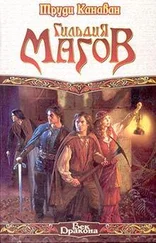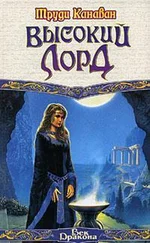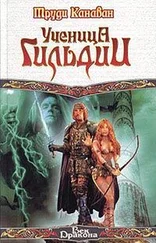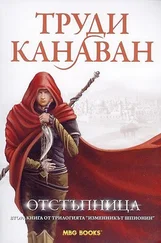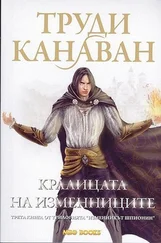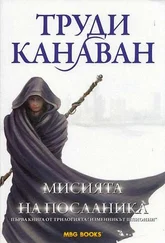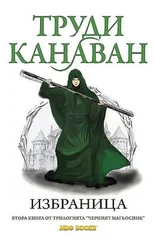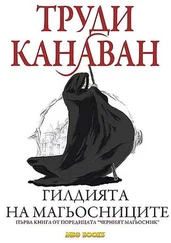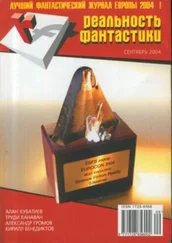Труди Канаван - The Magician’s Apprentice
Здесь есть возможность читать онлайн «Труди Канаван - The Magician’s Apprentice» весь текст электронной книги совершенно бесплатно (целиком полную версию без сокращений). В некоторых случаях можно слушать аудио, скачать через торрент в формате fb2 и присутствует краткое содержание. Год выпуска: 2009, Жанр: Фэнтези, на английском языке. Описание произведения, (предисловие) а так же отзывы посетителей доступны на портале библиотеки ЛибКат.
- Название:The Magician’s Apprentice
- Автор:
- Жанр:
- Год:2009
- ISBN:нет данных
- Рейтинг книги:3 / 5. Голосов: 1
-
Избранное:Добавить в избранное
- Отзывы:
-
Ваша оценка:
- 60
- 1
- 2
- 3
- 4
- 5
The Magician’s Apprentice: краткое содержание, описание и аннотация
Предлагаем к чтению аннотацию, описание, краткое содержание или предисловие (зависит от того, что написал сам автор книги «The Magician’s Apprentice»). Если вы не нашли необходимую информацию о книге — напишите в комментариях, мы постараемся отыскать её.
The Magician’s Apprentice — читать онлайн бесплатно полную книгу (весь текст) целиком
Ниже представлен текст книги, разбитый по страницам. Система сохранения места последней прочитанной страницы, позволяет с удобством читать онлайн бесплатно книгу «The Magician’s Apprentice», без необходимости каждый раз заново искать на чём Вы остановились. Поставьте закладку, и сможете в любой момент перейти на страницу, на которой закончили чтение.
Интервал:
Закладка:
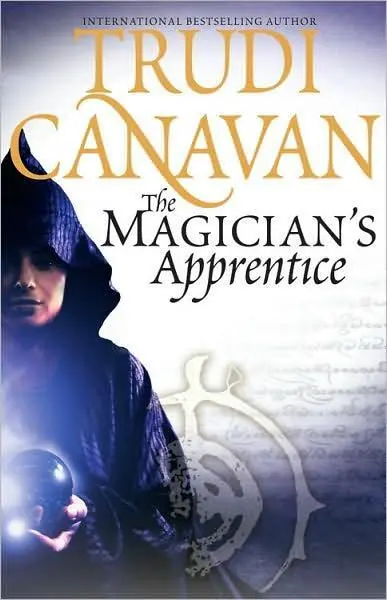
BY TRUDI CANAVAN
The Black Magician Trilogy
The Magicians’ Guild
The Novice
The High Lord
The Age of the Five
Priestess of the White
Last of the Wilds
Voice of the Gods
The Magician’s Apprentice
“History is written by the victors.”
Winston Churchill
“Found a book describing the Sachakan War written soon after the event. It is remarkable in that it portrays the Guild as the enemy – and it paints an unflattering image indeed!”
Letter from Lord Dannyl to Administrator Lorlen
“The history of magic is a tale of accidental discoveries and deliberate concealments It would be impossible to write an accurate history of magic without scraping away the dirt under which unpalatable facts have long been buried. Twenty years ago the Guild was scandalised to discover that what we know as ‘black magic’ was once called ‘higher magic’ and was practised by all magicians – who were all known as Higher Magicians. It was as much a shock to learn this as to comprehend that so much of our recorded history has been altered and destroyed. But there are stranger truths to be uncovered. I have unearthed no mention of the destruction of Imardin in the accounts of the Sachakan War, for instance. Yet it is an accepted part of our basic historical teachings. And the greatest mystery of all is how the waste-lands of Sachaka were created. The people of that land hold the Guild responsible for that terrible act. Yet no record has ever been found to explain how it was done.”
Extract from the preface of Lord Dannyl’s A Complete History of Magic
PART ONE
CHAPTER 1
There was no fast and painless way to perform an amputation, Tessia knew. Not if you did it properly. A neat amputation required a flap of skin to be cut to cover the stump, and that took time.
As her father deftly began to slice into the skin around the boy’s finger, Tessia noted the expressions of the people in the room. The boy’s father stood with his arms crossed and his back straight. His scowl did not quite hide signs of worry, though whether it was sympathy for his son or anxiety about whether he’d get the harvest finished in time without his son’s help, she could not tell. Probably a bit of both.
The mother held her son’s other hand tightly while staring into his eyes. The boy’s face was flushed and beaded with sweat. His jaw was clenched and, despite her father’s warning, he watched the work being done intently. He had remained still so far, not moving his wounded hand or squirming. No sound had escaped him. Such control impressed Tessia, especially in one so young. Landworkers were said to be a tough lot, but in her experience that was not always true. She wondered if the child would be able to keep it up. Worse was to come, after all.
Her father’s face was creased with concentration. He had carefully peeled the skin of the boy’s finger back past the joint of the knuckle. At a glance from him she took the small jointer knife from the burner and handed it to him, then took the number five peeler from him, washed it and carefully set the blade over the burner so it would be seared clean.
When she looked up, the boy’s face was a mass of wrinkles, screwed up tight. Tessia’s father had begun to cut through the joint. Looking up, she noted that the boy’s father was now a pasty grey. The mother was white.
“Don’t watch,” Tessia advised in a murmur. The woman’s head turned abruptly away.
The blade met the surgery board with a clunk of finality. Taking the small jointer from her father, Tessia handed him a curved needle, already threaded with fine gut-string. The needle glided easily through the boy’s skin and Tessia felt a little glow of pride; she had sharpened it carefully in readiness for this operation, and the gut-string was the finest she had ever fashioned.
She looked at the amputated finger lying at the end of the surgery board. At one end it was a blackened, oozing mess, but there was reassuringly healthy flesh all through the cut end. It had been badly crushed in an accident during harvest some days before, but like most of the villagers and land-workers her father serviced, neither boy nor father had sought help until the wound had festered. It took time, and extreme pain, before a person could accept, let alone seek, removal of a part of their body.
If left too long, such a festering could poison the blood, causing fevers and even death. That a small wound could prove fatal fascinated Tessia. It also scared her. She had seen a man driven to insanity and self-mutilation by a mere rotten tooth, otherwise robust women bleed to death after giving birth, healthy babies that stopped breathing for no apparent reason and fevers that spread through the village, taking one or two lives but causing no more than discomfort for the rest.
Through working with her father, she had seen more wounds, illness and death in her sixteen years than most women did in their lifetimes. But she had also seen maladies remedied, chronic illness relieved and lives saved. She knew every man, woman and child in the village and the ley, and some beyond. She had knowledge of matters that few were privy to. Unlike most of the locals she could read and write, reason and—
Her father looked up and handed her the needle, then cut off the remaining thread. Neat stitches held the flap of skin closed over the stump of the boy’s finger. Knowing what came next, Tessia took some wadding and bandages from his healer’s bag and handed them to him.
“Take these,” he told the mother.
Letting the boy’s other hand go, the woman passively let Tessia’s father lay the bandage across one palm, then arrange wadding on top. He placed the boy’s hand over her palm so the stump of the finger rested in the centre of the wadding, then took hold of the pulse binder on the boy’s arm.
“When I loosen this the blood in his arm will regain its rhythm,” he told her. “His finger will begin to bleed. You must wrap the wadding around the finger and hold it firmly until the blood finds a new pulse path.”
The woman bit her lip and nodded. As Tessia’s father loosened the binder the boy’s arm and hand slowly regained a healthy pinkness. Blood welled around the stitches and the mother quickly wrapped her hand around the stump. The boy grimaced. She smoothed his hair affectionately.
Tessia suppressed a smile. Her father had taught her that it was wise to allow a family to take part in the healing process in some small way. It gave them a sense of control, and they were less likely to be suspicious or dismissive of the methods he used if they took part in them.
After a little wait, her father checked the stump then bound it up firmly, giving the family instructions on how often to replace the bandages, how to keep them clean and dry if the boy resumed work (he knew better than to tell them to keep the boy at home), when they could be discarded, and what signs of festering they should watch for.
As he listed off the medicines and extra bandages they would need, Tessia removed them from his bag and set them on the cleanest patch of the table that she could find. The amputated finger she wrapped up and set aside. Patients and their families preferred to bury or burn such things, perhaps worrying what might be done with them if they didn’t dispose of them themselves. No doubt they had heard the disturbing and ridiculous stories that went around from time to time of healers in Kyralia secretly experimenting on amputated limbs, grinding bones up into unnatural potions or somehow reanimating them.
Читать дальшеИнтервал:
Закладка:
Похожие книги на «The Magician’s Apprentice»
Представляем Вашему вниманию похожие книги на «The Magician’s Apprentice» списком для выбора. Мы отобрали схожую по названию и смыслу литературу в надежде предоставить читателям больше вариантов отыскать новые, интересные, ещё непрочитанные произведения.
Обсуждение, отзывы о книге «The Magician’s Apprentice» и просто собственные мнения читателей. Оставьте ваши комментарии, напишите, что Вы думаете о произведении, его смысле или главных героях. Укажите что конкретно понравилось, а что нет, и почему Вы так считаете.

